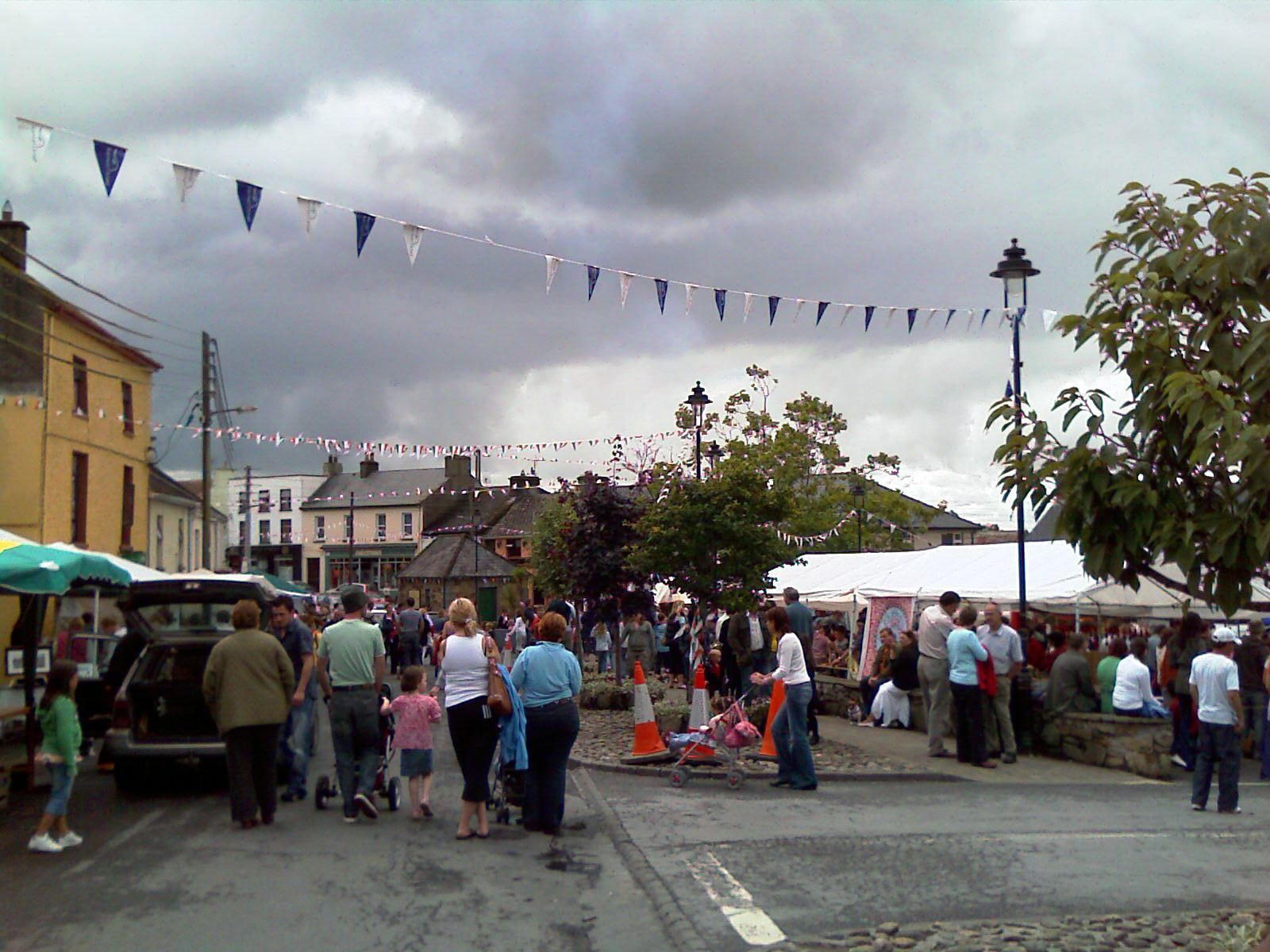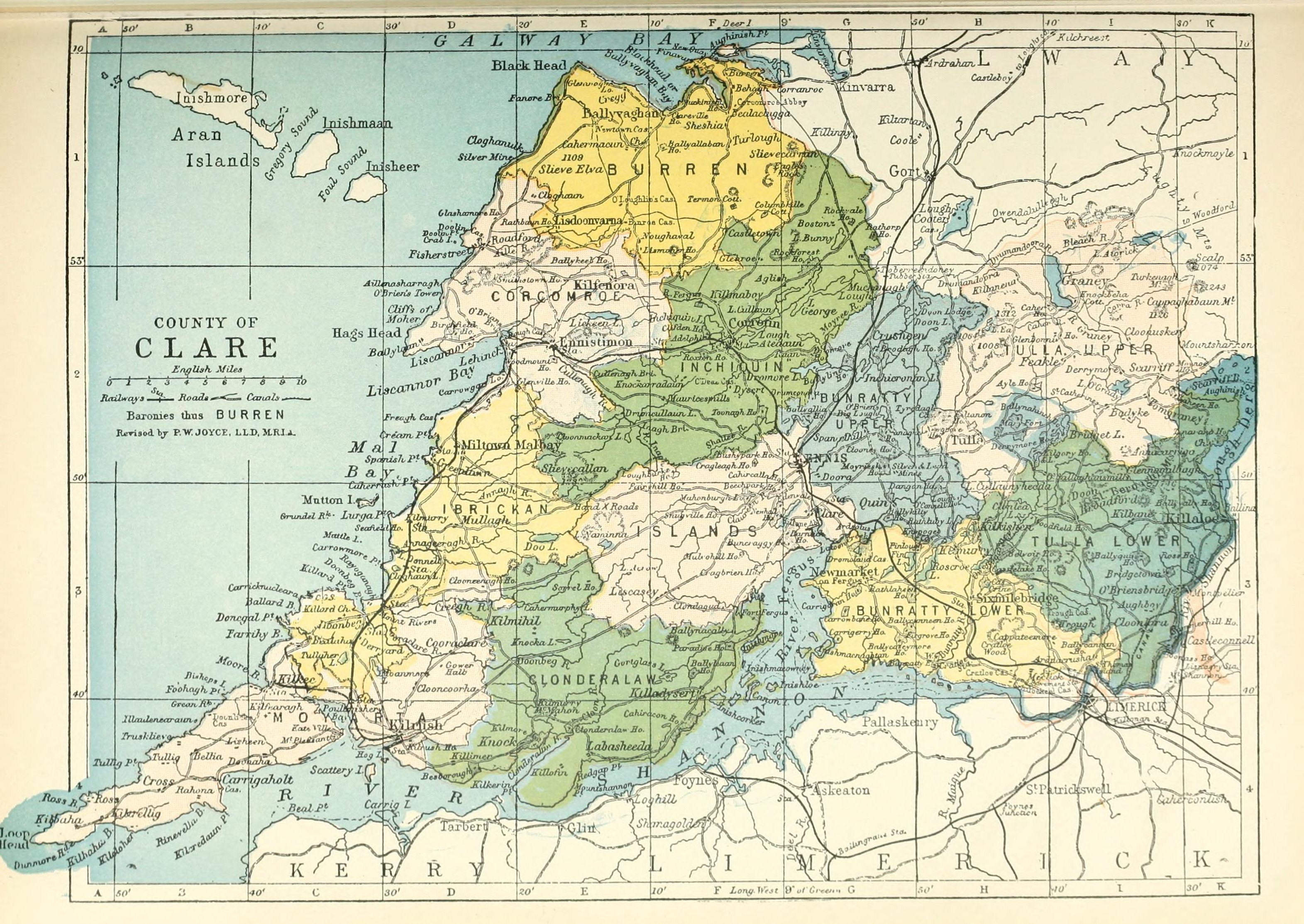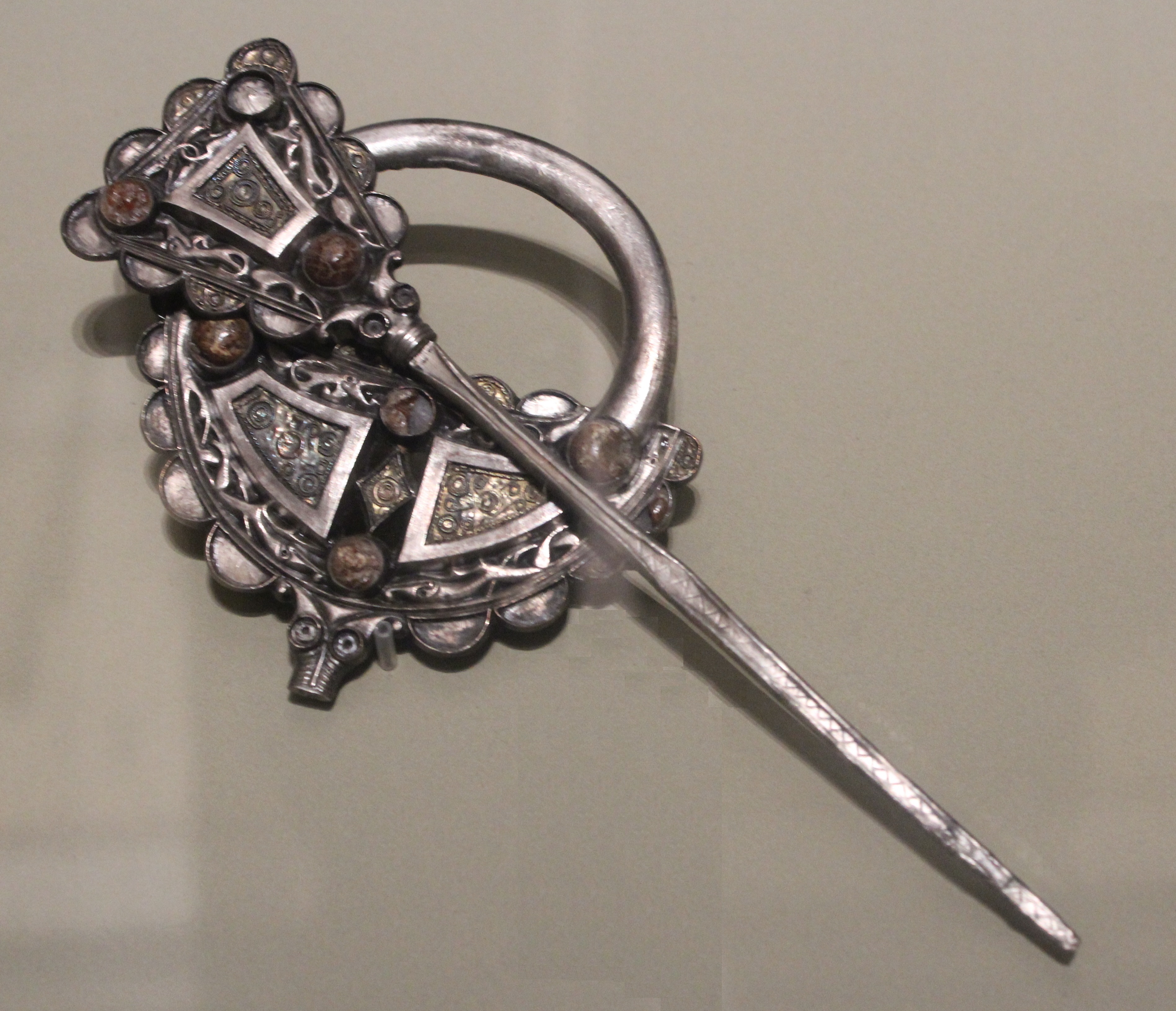|
Tuamgraney
Tuamgraney (; archaically spelled ''Tomgraney, Tomgrenei''; ) is a village in eastern County Clare in the west of Ireland and a civil parish by the same name. Situated a kilometre from the River Graney which flows into Lough Derg, it is an ancient settlement, noted for St Cronán's Church, said to be the oldest church in constant use in Ireland Location The parish is in the barony of Tulla Upper and contains the villages of Scarriff and Tomgraney. It is and covers . The parish is rugged, with heights ranging from above sea level. It contains the Scariff river from its headstreams through Lough O'Grady to its mouth in Scarriff bay, Lough Derg. The village of Tuamgraney lies in such close proximity to the town of Scarriff that today the two are often considered to be one single settlement. There is a holy well dedicated to St. Cronán in the Currakyle townland. The nearby castle of Tuamgraney is still in a good state of preservation. History According to legend, "Tuamgran ... [...More Info...] [...Related Items...] OR: [Wikipedia] [Google] [Baidu] |
Bodyke
Bodyke (; ga, Lúbán Díge) is a village in County Clare, Ireland. It is located in eastern County Clare in the Catholic parish of Bodyke. During the 1880s, a series of evictions in the Bodyke area were widely publicised. Location and amenities The village of Bodyke lies in the foothills of the Slieve Aughty mountains. Its name may come from "Both-Teig" (Teig's hut). Schools serving the area include Bodyke National School, Scariff Community School, and Tuamgraney National School. The Raheen Community Hospital in Tuamgraney is a public nursing home and day center. Bodyke evictions During the 1880s, the principal landowner in the Bodyke area, Colonel O'Callaghan, had refused to lower the rents he charged his tenants. They were in distress, and a demonstration was held by the Land League in Scarriff in November 1880 which attracted over 10,000 people. The clergy of the local areas featured prominently at this event, including Fr. Peter Murphy and J. Hannon who were the parish pr ... [...More Info...] [...Related Items...] OR: [Wikipedia] [Google] [Baidu] |
Scarriff
Scarriff Central Statistics Office, Census 2002Population of Towns ordered by County and size, 1996 and 2002 or Scariff () is a large village in east County Clare, Ireland, situated in the midwest of Ireland. The town is on the West end of Lough Derg and is best known for its harbour. The Scarriff Market House is easily recognisable, and it is therefore often used to represent the town.Official Scariff Website (top-left), Scariff News October 2007 (top-right, example . Location The name "Scarriff" comes from the Irish "scarbh", which may mean either a shallow, a rocky shore or a rough ford. All of these are ...[...More Info...] [...Related Items...] OR: [Wikipedia] [Google] [Baidu] |
Kilnoe
Kilnoe ( ga, An Chill Nua) is a civil parish in County Clare, Ireland. It is a rural area, part of the Roman Catholic parish of Bodyke. Location Kilnoe parish lies in the barony of Tulla Upper, southwest of Scarriff. It is and covers . The land in the east and center of the parish is mountainous, moorish, and boggy. The west is more suitable for farming. It contains Loughs Annilloon, St. Bridget, Derrymore, and Kilgory. In 1837 there were the ruins of the castle of Coolreath near the southern shore of Lough O’Grady and a ruined castle at Ballynahince. Neither of these castles are mentioned in the list of castles of 1580, perhaps because they had not been built at that time. As of 1841 the population was 3,482 in 574 houses. Townlands The parish contains the townlands of Annaghneal, Ballydonaghan, Ballynahinch, Caherhurley, Clogher, Clonmoner, Coolready, Coolreagh, Coolreagh Beg, Coolreagh More, Drummond, Inchalughoge, Kilgory, Kilnoe and Lisbarreen. ... [...More Info...] [...Related Items...] OR: [Wikipedia] [Google] [Baidu] |
Moynoe
Moynoe ( ga, Maigh nEo) is a civil parish in County Clare, Ireland. It is part of the Roman Catholic parish of Scarriff and Moynoe. Location Moynoe parish lies in the barony of Tulla Upper. It is northeast of Scariff. The parish is and covers . On the northern boundary Lough Atorick has a surface-elevation of above sea-level. Most of the parish, apart from a district of beside Scariff bay on Lough Derg, is in the Slieve-Baughta mountains. Settlements The parish was originally called Moyno Norbree. Moyno means the plain of the yew tree, but the meaning of Norbree is unknown. As of 1897 the ruin of the old church was in reasonably good condition. Near it a ruined arch was probably a gateway that led to Moynoe castle, the property of Edmond O’Grady. Further off is a holy well dedicated to Saint Mochunna, the patron saint of Feakle as well as of Moynoe. The parish contains the townlands of Cappaghabaun Mountain, Cappaghabaun Park, Carrowmore, Meenross, Moynoe, Pollag ... [...More Info...] [...Related Items...] OR: [Wikipedia] [Google] [Baidu] |
Edward MacLysaght
Edgeworth Lysaght, later Edward Anthony Edgeworth Lysaght, and from 1920 Edward MacLysaght ( ga, Éamonn Mac Giolla Iasachta; 6 November 1887 – 4 March 1986) was a genealogist of twentieth century Ireland. His numerous books on Irish surnames built upon the work of Rev. Patrick Woulfe's ''Irish Names and Surnames'' (1923). Early life and education Edgeworth Lysaght was born at Flax Bourton, Somerset (near Bristol) to Sidney Royse Lysaght (1856-1941), of Irish origin, a director of the family iron and steel firm John Lysaght and Co. and a writer of novels and poetry, and Katherine (died 1953), daughter of Joseph Clarke, of Waddington, Lincolnshire. Lysaght's grandfather, Thomas Royse Lysaght, was an architect, and his great-grandfather, William Lysaght, a small landowner distantly connected with the Barons Lisle. Lysaght was named "Edgeworth Lysaght" after his father's friend, the economist Francis Ysidro Edgeworth; "Edward" was added at baptism, and he was called "Ned". "An ... [...More Info...] [...Related Items...] OR: [Wikipedia] [Google] [Baidu] |
Edna O'Brien
Josephine Edna O'Brien (born 15 December 1930) is an Irish novelist, memoirist, playwright, poet and short-story writer. Elected to Aosdána by her fellow artists, she was honoured with the title Saoi in 2015 and the "UK and Ireland Nobel" David Cohen Prize in 2019, whilst France made her Commandeur de l'Ordre des Arts et des Lettres in 2021. O'Brien's works often revolve around the inner feelings of women, and their problems in relating to men, and to society as a whole. Her first novel, '' The Country Girls'' (1960), is often credited with breaking silence on sexual matters and social issues during a repressive period in Ireland following the Second World War. The book was banned, burned and denounced from the pulpit. Faber and Faber published her memoir, '' Country Girl'', in 2012. O'Brien lives in London. O'Brien has been mentioned as a candidate for the Nobel Prize in literature. Philip Roth described her as "the most gifted woman now writing in English", while a for ... [...More Info...] [...Related Items...] OR: [Wikipedia] [Google] [Baidu] |
Ó Cillín
Ó Cillín is the name of a family now rendered as Killeen (also Killian and Killion), found mainly in County Roscommon, County Mayo and County Galway "Righteousness and Justice" , anthem = () , image_map = Island of Ireland location map Galway.svg , map_caption = Location in Ireland , area_footnotes = , area_total_km2 = .... It is derived from the saint's name Cillian. Annalistic references * ''966: Cormac ua Cillín, of the Ui Fhiachrach of Aidne, successor of Ciarán and Comán and comarba of Tuaim Gréne — and by him was built the great church of Tuaim Gréne, and its bell-tower — a sage and an old man and a bishop, rested in Christ.'' * ''1026: Conall ua Cillín, successor of Crónán of Tuaim Gréine, rested.'' * ''1087: The battle of Conacla i.e. in Corann, won by Ruaidrí ua Conchobuir and Cormac ua Cillín, chief vice-abbot of Síl Muiredaigh, with the staff of Ciarán in his hand ... [...More Info...] [...Related Items...] OR: [Wikipedia] [Google] [Baidu] |
County Clare
County Clare ( ga, Contae an Chláir) is a county in Ireland, in the Southern Region and the province of Munster, bordered on the west by the Atlantic Ocean. Clare County Council is the local authority. The county had a population of 118,817 at the 2016 census. The county town and largest settlement is Ennis. Geography and subdivisions Clare is north-west of the River Shannon covering a total area of . Clare is the seventh largest of Ireland's 32 traditional counties in area and the 19th largest in terms of population. It is bordered by two counties in Munster and one county in Connacht: County Limerick to the south, County Tipperary to the east and County Galway to the north. Clare's nickname is ''the Banner County''. Baronies, parishes and townlands The county is divided into the baronies of Bunratty Lower, Bunratty Upper, Burren, Clonderalaw, Corcomroe, Ibrickan, Inchiquin, Islands, Moyarta, Tulla Lower and Tulla Upper. These in turn are divided into civ ... [...More Info...] [...Related Items...] OR: [Wikipedia] [Google] [Baidu] |
Roman Catholic Diocese Of Killaloe
The Diocese of Killaloe ( ; ga, Deoise Chill Dalua) is a Roman Catholic diocese in mid-western Ireland, one of six suffragan dioceses in the ecclesiastical province of Cashel and Emly. The cathedral church of the diocese is the Cathedral of Ss Peter and Paul in Ennis, County Clare. The incumbent bishop of the diocese is Fintan Monahan. Geography The diocese is divided into 58 parishes, which are spread across five counties: 38 in Clare, thirteen in Tipperary, five in Offaly, one in Limerick, and one group parish in Laois. The parishes are grouped into 15 Pastoral Areas, where groups of priests are appointed to cover a number of parishes between them. As of 2018, there were 90 priests in the diocese: 52 under and 38 over the mandatory retirement age of 75. However, by 2020, this had decreased to 70: 36 under and 34 over 70. Aside from the cathedral town of Ennis, the main towns in the diocese are Birr, Kilrush, Nenagh, Roscrea Roscrea () is a market town in Coun ... [...More Info...] [...Related Items...] OR: [Wikipedia] [Google] [Baidu] |
Grian
Grian or ''Greaney'' is the name of a river, a lake, and region in the portion of the Sliabh Aughty mountains in County Clare. It formed part of the boundary of the kingdom of Síol Anmchadha. Grian (literally, "Sun") is also the name of an Irish figure, presumed to be a pre-Christian goddess, associated with County Limerick and ''Cnoc Greine'' ("Hill of Grian, Hill of the sun"), located seven miles from Knockainy. While Grian's name literally means "the sun" in modern Irish, her name is derived from the Proto-Indo European word *''gwher-'', meaning "to be hot" or "to burn" rather than the derivations for sun in other Indo-European languages. See also * Deò-ghrèine * Gráinne (given name) * Tuamgraney Tuamgraney (; archaically spelled ''Tomgraney, Tomgrenei''; ) is a village in eastern County Clare in the west of Ireland and a civil parish by the same name. Situated a kilometre from the River Graney which flows into Lough Derg, it is an anci ... References Geog ... [...More Info...] [...Related Items...] OR: [Wikipedia] [Google] [Baidu] |
Coarb
A coarb, from the Old Irish ''comarbae'' (Modern Irish ''comharba'', Latin: ''hērēs''), meaning "heir" or "successor", was a distinctive office of the medieval church among the Gaels of Ireland and Scotland. In this period coarb appears interchangeable with "erenach", denoting the episcopally nominated lay guardian of a parish church and headman of the family in hereditary occupation of church lands. The coarb, however, often had charge of a church which had held comparatively high rank in pre‐Norman Ireland, or one still possessed of relatively extensive termon lands. Also as per this article "... such lucrative monastic offices as “coarb” (comarbae “heir” to a saint) or “erenach” (airchinnech “superior”), otherwise transmitted by natural or nepotic descent within ecclesiastical families, which were often the politically displaced branches of royal dynasties" The coarb of Columba In medieval Ireland and Scotland, the coarb of St Columba ( Medieval Gaelic ''c ... [...More Info...] [...Related Items...] OR: [Wikipedia] [Google] [Baidu] |
Roscrea
Roscrea () is a market town in County Tipperary, Ireland, which in 2016 had a population of 5,446. Roscrea is one of the oldest towns in Ireland, having developed around the 7th century monastery of Crónán of Roscrea, Saint Crónán of Roscrea, parts of which remain preserved today. Roscrea is a designated ''Irish Heritage Town'' due to the extent of important historical buildings that are preserved in the town. Amongst the most notable buildings of interest are the 13th century Roscrea Castle and Damer House on Castle Street. Within the town are the remains of the ancient Romanesque architecture, Romanesque doorway and gable-end of St Cronan's church. The Irish round tower, Round Tower and the High cross of the ancient monastery are also located nearby. Also of interest in the town are the remains of the 15th century Franciscan Friary and Monaincha Church, Monaincha and Sean Ross Abbeys. One of the most famous books produced by the monastery is the 8th-century Book of Dimma c ... [...More Info...] [...Related Items...] OR: [Wikipedia] [Google] [Baidu] |



